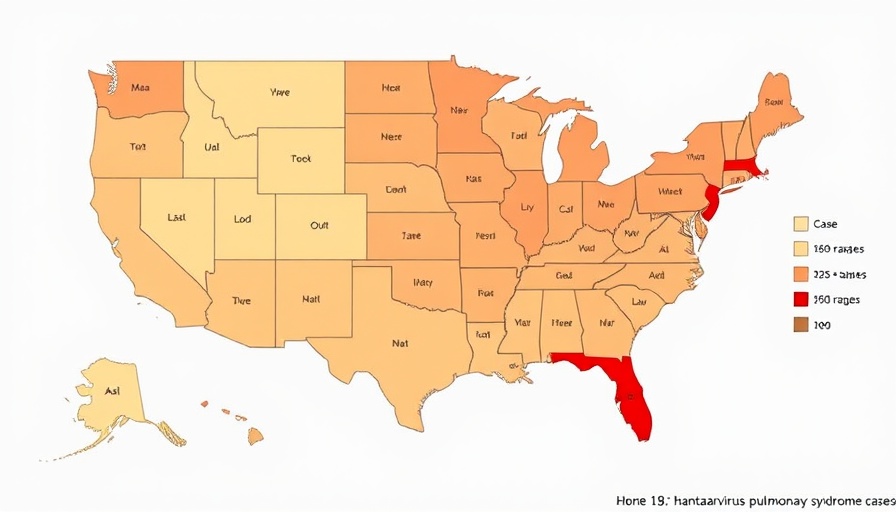
The Tragic Deaths of Gene Hackman and Betsy Arakawa: A Call to Understand Hantavirus
On February 26, 2025, New Mexico officials confirmed the deaths of acclaimed actor Gene Hackman and his wife, Betsy Arakawa. They were found at their home in Santa Fe, only days apart. While Hackman likely succumbed to heart disease at the age of 95, Arakawa's death was attributed to hantavirus pulmonary syndrome, a rare but potentially deadly disease that raises alarm bells for public health officials. Understanding this disease could save lives and prevent further tragedies.
What is Hantavirus Pulmonary Syndrome?
Hantavirus is a viral infection primarily transmitted through contact with rodents, particularly deer mice, whose droppings, urine, and saliva can carry the virus. Although rare, hantavirus pulmonary syndrome (HPS) is a serious illness that primarily manifests in the Western Hemisphere, affecting people who come into contact with contaminated environments. According to the Centers for Disease Control and Prevention (CDC), with only a handful of confirmed cases reported in New Mexico annually, HPS poses a significant threat with a fatality rate approaching 42%. As the CDC continues monitoring, it is vital to shed light on the symptoms and typical progress of the infection.
The Symptoms: A Camouflage of Common Illnesses
Symptoms of hantavirus infection can be insidious. Initially resembling flu-like symptoms, individuals may experience fatigue, fever, and muscle aches. According to Dr. Sonja Bartolome of UT Southwestern Medical Center, “It starts like the flu; early symptoms may be mistaken for more common ailments such as influenza or COVID-19.” This deceptive onset can delay crucial treatment when signs start to escalate toward severe respiratory distress, including coughing and shortness of breath. Sadly, in acute cases, patients can deteriorate rapidly, highlighting the importance of early detection.
Historical Context: Understanding the Disease's Origins
The CDC began monitoring hantavirus after a significant outbreak in the early 1990s in the Four Corners region, where a cluster of healthy individuals suddenly fell gravely ill. This incident marked a turning point in public health, prompting extensive research into the virus and its transmission methods. According to Dr. Jeff Duchin, a retired public health officer, “The rapidity with which it can harm a healthy individual is alarming, and health policies around prevention need to reflect this threat.” As of 2022, there have been 864 cases reported in the U.S., with New Mexico being the epicenter, underscoring the persistent risk in known habitats.
Preventative Measures: How to Protect Yourself from Hantavirus
Given that there is no specific treatment for hantavirus pulmonary syndrome, prevention remains the primary focus. The New Mexico Health Department emphasizes the importance of avoiding rodent exposure. Protective measures include wearing gloves when cleaning areas where rodents are or have been visible, utilizing respirators, and thoroughly disinfecting environments with bleach solutions. Public health experts warn against sweeping or vacuuming droppings, as this can aerosolize the virus and increase inhalation risk. Understanding these strategies is essential for safeguarding both personal and communal health.
Future Implications: What Lies Ahead?
As the aftermath of the Arakawa tragedy unfolds, the need for increased awareness around hantavirus and its potential for fatal outcomes cannot be overstated. Health officials continue to work on identifying how varying strains of the virus interact with different environments and host physiology. This represents not just a public health concern but a call to action for both awareness and education on zoonotic diseases that can emerge from wildlife. The prevention strategy focuses on behavioral change and the need for communities to understand the threats posed by interactions with wildlife, especially in rural and semi-urban settings.
Conclusion: Stay Informed, Stay Safe
The deaths of Betsy Arakawa and Gene Hackman serve as tragic reminders of the seriousness of hantavirus pulmonary syndrome and other zoonotic diseases. Raising awareness helps build a more informed community, essential for reducing transmission risks. As researchers continue to seek answers and treatments, individuals are encouraged to follow health advisories to guard against these lurking threats in our environments.
To learn more about hantavirus and protective measures, please share this article with your friends and family, and stay informed about the health of your community.
 Add Element
Add Element  Add Row
Add Row 



Write A Comment